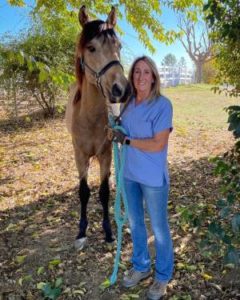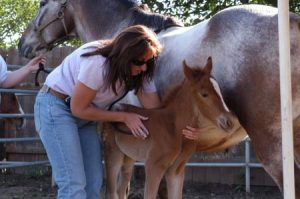
ONE FREE BITE
The so-called “one bite rule” has been around for centuries. The rule was a well-established tenet of English common law as far back as the 1600s and the principle migrated to the United States with English law after the Revolutionary War. Typically applied to encounters between humans and dogs, the rule holds the owner blameless for injuries inflicted by an animal if the owner had no prior knowledge of the animal’s dangerous propensity to bite.
The rule, in most cases, gives a dog a free pass the first time the animal bites someone. After the first incident, though, the owner obviously will not be able to claim a lack of knowledge about the dog’s tendency to bite. A majority of states have either done away with the rule altogether or have adopted statutes that modify it, but at least 18 jurisdictions still adhere to the basic principle.
Does the “one bite rule” also apply to horses?
In Connecticut, at least, the answer is “yes.”
In June 2008, a child visiting a Connecticut farm with his family allegedly was bitten on the cheek by a horse. The child’s parents filed a personal injury lawsuit and the case wound up in the state Superior Court. The question was whether the “one bite rule” could be applied to insulate the owners of the farm and the horse from liability.
After some initial confusion about which horse was being blamed for the biting incident—the offending horse eventually was identified as “Scuppy”—the owners argued that they had neither actual nor constructive knowledge of Scuppy’s supposed “vicious propensities.” Without such knowledge, the defendants said, they owed no duty to the injured child. Scuppy never had bitten anyone before, at least not as far as the owners knew, they said, and therefore the horse was entitled to his “first bite.”
The child’s parents, on the other hand, argued that “a horse, by its very nature, is capable of biting someone without provocation or predisposition and that this was known by the defendants.” They seemed to be saying that general knowledge that all horses might bite could substitute for knowledge that a specific horse (Scuppy in this case) would bite. It was an intriguing argument that ultimately failed.
The Court reviewed other Connecticut cases involving personal injuries sustained by people during encounters with dogs, cats, and horses, and stated the following rule: “the owner of a horse, classified as a domesticated animal, is only liable to an injured plaintiff if the owner had actual or constructive knowledge of the horse’s propensity to attack other animals or people.” There was no evidence in the record to suggest that Scuppy ever had bitten anyone in the past, and the parents admitted that they knew of no one, other than their son, who had been bitten by any horse on the farm.
One of the farm owners testified that Scuppy was a “typical horse” and that any horse might nip given an opportunity. But he testified that Scuppy never had bitten anyone before and that no one had told him that Scuppy was a biter. Without that specific knowledge, the Court applied the “first bite rule” to determine that there was no liability for the child’s injuries.
Although the rule typically is applied to dog bites, the principle might have broader application to any personal injury caused by a horse or other domestic animal. Better than a viable defense, though, is prevention of a lawsuit in the first place. What risk management strategies do you use to prevent injuries to farm visitors?

















